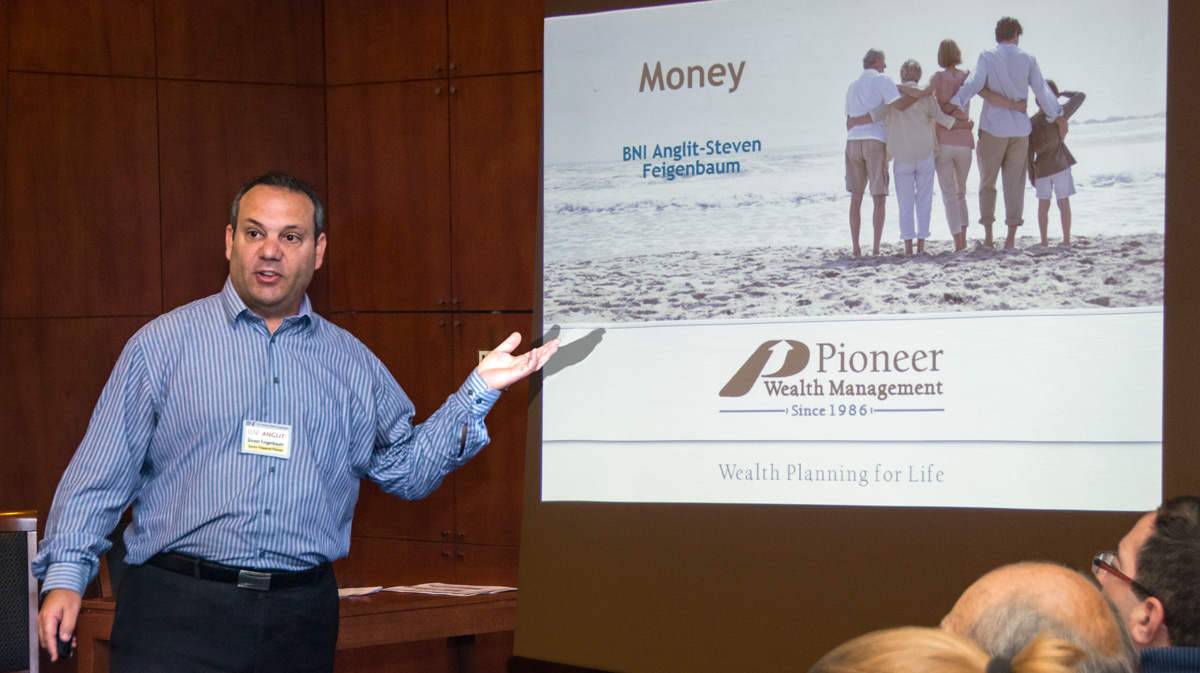Recently I needed to take a picture of a colleague during a keynote speech. A good picture is one that tells a story, and in the case of his Powerpoint presentation this required three elements – a good expression and gesture, an appropriate slide on the screen, and some indication of an attentive audience
Unfortunately these three elements refused occur at the same time in a single frame. Undaunted, I took a picture of a suitable expression, a separate picture of the screen, and a picture just of the audience.
Afterwards I combined these three pictures together to create the picture I would have taken had circumstanced permitted.
Three pictures …
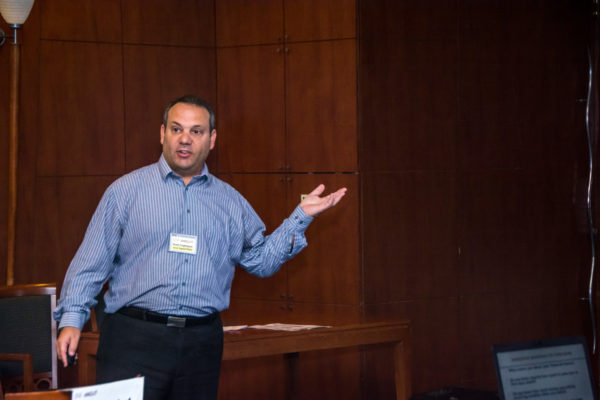
Here’s a shot I wanted to use of a suitable expression. The speaker was standing away from the screen, so I left space in the area he’s gesturing towards to add the screen and the audience later.

I took a snap of the slide that would best illustrate the nature of his presentation.
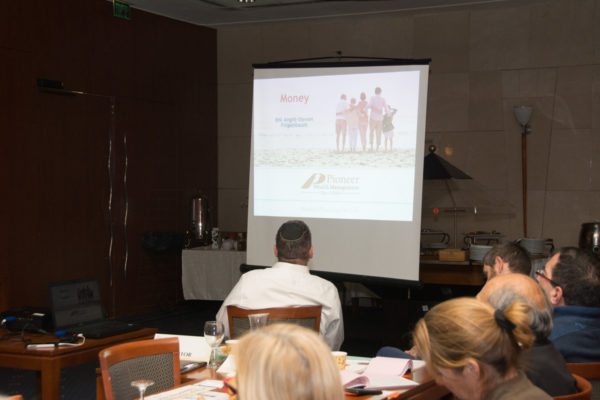
And took this picture, specifically to use just three heads on the far right.
Later I used Photoshop to craft this composite picture which tells the story I would have captured in camera had it actually happened!
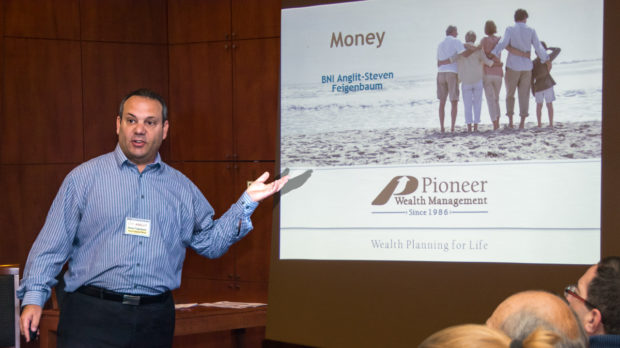
To complete the photo-realistic effect I also gave the impression of light on his hand and the shadow this would have cast on the screen.
Practice
To combine pictures together realistically is very enjoyable and not particularly difficult, but it does require lots of practice and experience. If this interests you, then get a full copy of Photoshop, as Photoshop Elements is not suitable.
You will also need a Wacom tablet and pen: This is a pressure-sensitive digital “brush” that is absolutely essential for this kind of work as most high-quality retouching requires careful hand painting with the digital brush.
There are plenty of tutorials on the Internet that will amaze you with clever techniques and shortcut methods of combining pictures together. These can be useful, but also search for down-to-earth demonstrations of how to use Layer Masks and Adjustment Layers – this is how to unleash the real power of Photoshop when used with a digital brush.
Carrying on the tradition
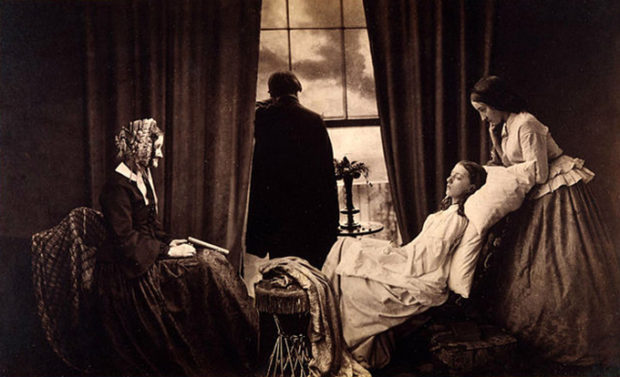
Combining several images into one picture is nothing new: Painters, of course, have been doing this for centuries. Photography was invented in 1826 and one of the first composite images was made by Henry Peach Robinson in 1858. He printed five negatives together to make this beautiful and haunting picture to tell a complete story in a single frame.
Today we carry on this tradition using the remarkably convenient methods of digital editing. Combining images to tell the story is great fun (as long as you are not a photojournalist), which is why I developed my two complimentary careers of photographer and digital artist.
I occasionally give short Photoshop for Photographer courses, details here …
